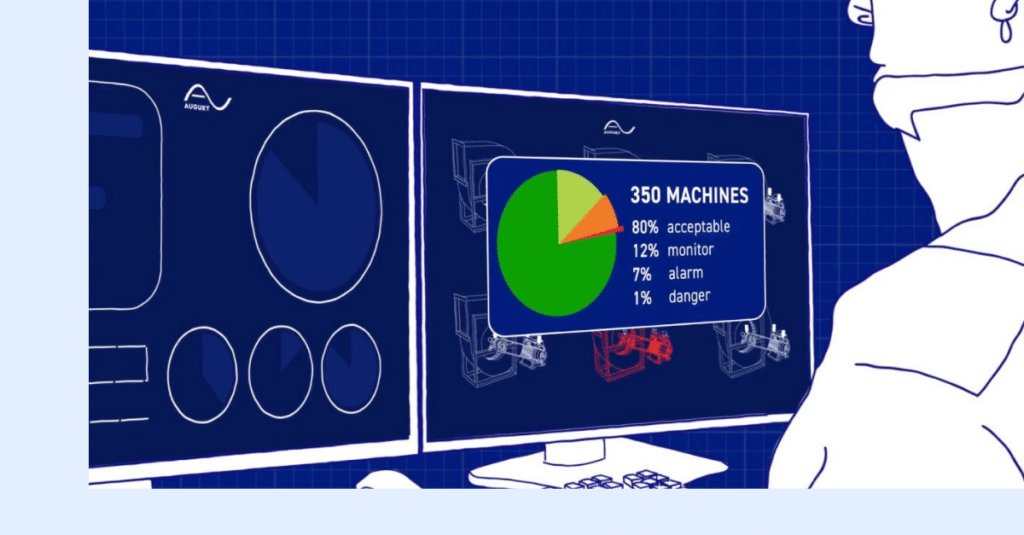
A manufacturing leader’s job might never be simple, but it’s always interesting. Fielding emergency calls, coping with unexpected breakdowns and searching for ways to increase efficiency are all part of the job. Fortunately, machine health technology has advanced rapidly in recent years, making manufacturing leaders’ lives easier.
I’ve been a manufacturing leader for companies like Procter and Gamble, Scott Paper Co. (now Kimberly Clark) and PepsiCo for nearly 40 years. This has afforded me a detailed view of how digital machine health has evolved over time.
Here are four key ways I’ve seen Digital Machine Health benefit the lives of manufacturing leaders:
Fewer Emergency Calls
Catastrophic equipment failures used to be the top reason for emergency trips to the plant—usually in the middle of the night or on a weekend. These can be avoided almost entirely with a reliable Digital Machine Health solution.
Today’s digital approaches to machine health mean manufacturing leaders can know what’s causing the abnormal vibration coming from a drive motor, long before they’re clocking out on Friday. And generally speaking, when the line’s down the solution is usually an emergency replacement part, shipped immediately, at exorbitant cost. Manufacturing leaders are now able to troubleshoot during their workdays, instead of in the middle of the night.
Fewer Preventable Breakdowns
Most unexpected breakdowns aren’t actually unexpected—like a wobbly tire on a car, they start small, and get worse. For example, small buildup on fan blades can eventually increase until the fan wobbles so far out of alignment that it enters a critical failure—and at that point, it might even take other machines down with it.
Preventive maintenance, changing out parts before they wear out or regularly inspecting for signs of failure, was an early way to prevent unexpected breakdowns. But it costs thousands in both labor hours and parts because prevention focuses on replacing parts on a fixed schedule, whether they’re needed or not. Plus, even a regular preventive routine can’t ensure 100% reliability, because sometimes the inspections themselves can cause failures if assets aren’t reassembled in just the right way.
Today, digital machine health solutions help manufacturing leaders know which assets need attention, when they need it, and how to correct any malfunctions long before they become critical.
More Reliable Insights
Insights into the health of production equipment provide a significant advantage for manufacturers. Scott Paper Company knew the value of predictive machine insights as early as the mid-1990s when it initiated early monitoring techniques like infrared thermography and employed three full-time vibration analysts at its Chester, PA plant. Along with other monitoring methods, like oil analysis and ultrasonic leak detection, specialized technicians could accurately detect machine malfunctions, sometimes hours or days before they escalated into failures. But highly trained technicians were expensive, making them impractical for smaller facilities, and they could only provide snapshots of what was happening. If a failure developed rapidly, it remained undetectable.
Contemporary production facilities stay competitive by adopting digital machine health technologies that let them know exactly what’s going on with their machines at any given time. The ability to monitor machines in real-time and gain actionable business intelligence from the data is a game-changer.
With the introduction of wireless sensors, cloud computing, artificial intelligence, and digital machine health monitoring, manufacturing leaders’ jobs have become much easier. Instead of searching for the reasons behind abnormal machine behavior, they can consult algorithms in near-real-time to determine the exact cause of an emerging malfunction on a drive motor. Or, for example, they can tell if a cutter blade is getting dull, which could lead to ragged cuts and poor quality wrapping, and give technicians enough notice to replace it during scheduled downtime.
With digital machine health, it’s almost as though the machines can speak for themselves. This creates a more reliable production facility with predictable output—the heart of an effective and agile supply chain.
Better Outcomes
Wins from a more reliable supply chain ripple throughout the whole enterprise because outcomes go beyond simply saving on downtime, repair and maintenance costs. With a reliable supply chain, warehousing and storage costs decrease thanks to lower inventory requirements and individual facilities become more competitive by reducing scrap and minimizing the need for emergency spare parts.
When assets function in their optimal state they are more likely to produce to target output without being sidelined. This keeps stakeholders and customers happy while increasing product quality. Maintaining productive capacity also keeps sales departments happy and can lead to less demand for backroom stock at retail outlets.
Employees are happier with healthy machines too, because no one wants to operate or be associated with poorly running lines. And the implications machine health has on operator safety cannot be understated as every employee-machine interaction carries the risk of injury.
Best of all, when manufacturing leaders know their machines are working as intended, they can get better sleep. The job of a manufacturing leader is always evolving but digital machine health ensures they face far fewer emergencies along the way.
Schedule a conversation with a Digital Machine Health expert.




